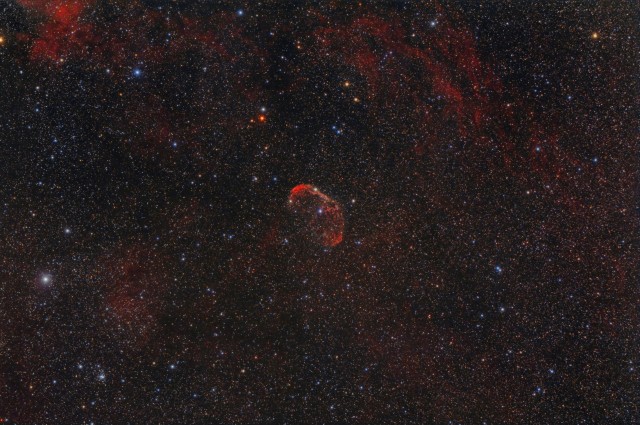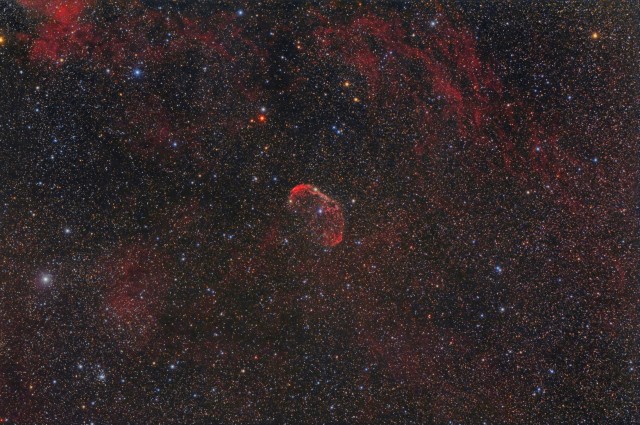
11×480″ ISO800 (5.21 hrs.) Data acquired on Oct 17, 2014, Nov 2, 2013, Nov 6 & 7, 2010 and Oct 1, 2007.

11×480″ ISO800 (5.21 hrs.) Data acquired on Oct 17, 2014, Nov 2, 2013, Nov 6 & 7, 2010 and Oct 1, 2007.
A mosaic of the Crescent Nebula area. Exposures from 4 different years were used. The base image was acquired on Nov 2, 2013 and was 40x60sec ISO 6400. I imaged it again on October 17, 2014 with 77 images and added that into the mix. Two nights of imaging in Nov 2010 of 9×720″ ISO400, 11×480″ ISO800 sub-images were also added in (for a total of 5.21 hours integration time.) Finally, data from an image of just the Crescent Nebula itself, taken with my SN-8 telescope was used and it was made with 57×180″ ISO 1600 sub-images taken on Oct 1, 2007.
I used RegiStar to manipulate the data. The beauty of software like RegiStar is that it can combine data taken years apart. In this case, over 7 years. I was able to take the nebulosity caught with a high ISO stack of sub-images, but with a noisy background and combine it with stacks of subs taken at lower ISO values which had a much smoother background. The stacked mosaic-like result let me bring out more of the dim nebulosity that pervades the Crescent Nebula area and keep the noise at bay, somewhat. A little more detail in the Crescent itself was enhanced with data from my larger, 8″ scope.
I present a regular version and an enhanced, lighter version that was generated from the data in the first image with Starizona’s Levelizer plug-in for PS.
